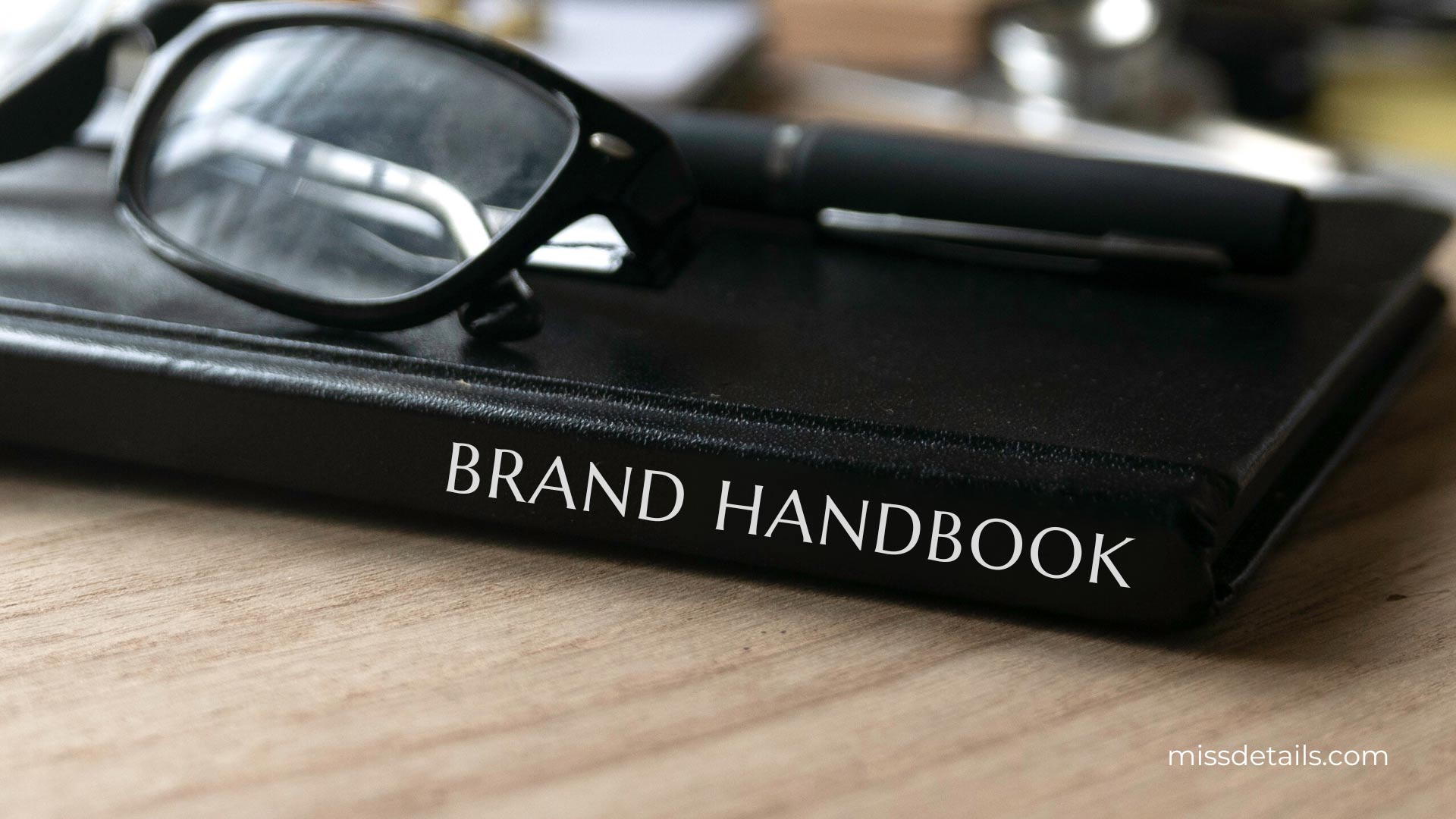Your brand handbook is an invaluable resource for establishing consistency, informing designers, and making strategic decisions that impact the growth and success of your business.
But just because your business has a brand handbook doesn't mean you're putting it to good use. Developing your handbook is just the first step. To take advantage of its many benefits, you need to be intentional about the way you're using it in the day-to-day operation of your business.
Want to make the most of your brand handbook? Here are four best practices to follow when using and maintaining your brand guidelines.


What is a Brand Handbook?
Odds are, you’ve seen a brand handbook in action before, even if you didn’t call it by that name. It’s one of several ways to refer to the core document outlining the foundational elements and visual standards of your brand. Your business may refer to it as your brand guidelines or even brand playbook.
Whatever you choose to call it, it usually contains a combination of information about both the tangible and intangible aspects of your brand that make you who you are, including your brand standards and style guide.
Every brand handbook looks a little different, but here at Miss Details we encourage you to include the following components:
- Mission
- Vision
- Values
- Goals
- Audience
- Brand Archetype – your brand's personality type
- Differentiators
- Brand Voice – words, phrases, tone, attitude
- Copy Guidelines – grammar and style
- Primary and Secondary Color Palette
- Color Specifications – Pantone, CMYK, RGB, Web Hex
- Logo Usage – where and how the logo will be seen
- Uses and Misuses of the Logo
- Typography – including font type, alignment, headers, sub-headers, etc.
- Design Elements and/or Variations of the Logo
- Publication Examples – digital and print
- Illustration, Icon, and Photographic Style Overview
- Links to Brand Resources
- Brand Team Contact Information
Note that the handbook doesn't just contain information, like a copy of your logo. It also contains guidelines about how to use that information, such as where and how the logo will be seen and examples of how it can be misused. These details are what make the document such a useful resource for people both inside and outside of your company.
(Here at Miss Details, we offer a more succinct version of a brand handbook called the Brand Snapshot™. While not a complete set of brand guidelines, it's a cost-effective resource that synthesizes all the important information that a small business would need for their visual standards, and it's tailored toward their particular stage of development. Give it a look!)

Benefits of Creating & Implementing a Brand Handbook
Your brand handbook is so much more than a reference tool. It's an essential part of building your brand and can benefit your business in a variety of ways:
- Delivers a consistent brand experience that makes you stand out among competitors
- Protects your brand from being misunderstood by your audience
- Inspires and guides marketing and design projects
- Impacts strategic decisions about the growth and goals of your company
- Facilitates the onboarding of new employees
- Clarifies details that have been unclear or up for debate

Brand Handbook Best Practices
With such a powerful resource on hand, it's a good idea to make sure you're actually using it—and using it well. Fortunately, there are a handful of easy best practices you can follow to ensure you're getting the most out of your brand handbook.
1. Use a Digital Asset Management (DAM) System
Your brand handbook is instrumental in the creation of all of your brand assets, but without a reliable way to store, organize, and distribute them, you risk detracting from the consistent and cohesive brand experience that the handbook is meant to provide.
Fortunately, there's a modern solution that makes handling your brand assets simple: a digital asset management (DAM) system. Although there are many different DAM systems to choose from (such as Brandfolder, Frontify, Lingo, or Air), they all have similar functions that make managing assets—and creating a powerful brand experience—significantly easier, including:
- Streamlined organization: DAM makes storing and searching for files easier than ever thanks to tools like filters, auto-tagging, version tracking, and duplicate screening. No matter who needs to find or upload a file, DAM technology ensures that everything remains organized, up to date, and easy to find.
- Safe and convenient file sharing: Whether you need to share files with employees or external agencies, a DAM platform makes the process simple and safe. You can send hundreds of assets at once with shareable links or use a password-protected brand portal that gives users a place to search and find only the assets you want them to have access to.
- Ease of collaboration: With a DAM platform, you can easily collaborate with other departments or an outside designer. Oftentimes, you can add comments directly within the software and approve or reject any assets uploaded by people inside or outside of your organization.
By giving you a centralized place to store, organize, and share your brand assets, DAM helps you ensure that your brand handbook does exactly what it was meant to: create a consistent, recognizable brand that your audience will remember.
2. Maintain Digital and Printed Versions
As powerful as digital tools can be, don't underestimate the utility of good ol' fashioned printed materials—especially when it comes to design. It's a good idea to keep both a digital and printed copy of your brand handbook on hand so you're prepared for any situation.
For example, a lot of designers prefer to work with tangible materials, like color and fabric swatches, so they can really get a feel for your brand. You can ensure they have everything they need by keeping a printed handbook you can bring along to meetings. Plus, it never hurts to have a backup. Should your DAM system ever fail, you'll still have a point of reference to turn to.
3. Conduct Regular Training
Just as it takes practice to learn a new skill, it will take your team and other stakeholders multiple exposures to your brand handbook to fully internalize the essence of your brand and how to implement guidelines successfully. That's why conducting regular training should be a part of your company's internal processes.
You can make training simpler and more engaging by creating digital slides of your handbook. That way, whether you hold a formal presentation with your team or send it out to brand partners to review on their own, you have a well-organized and easy-to-update tool to make sure everyone is fully informed. Keeping everyone up to speed is essential to effectively utilizing your brand guidelines.
4. Revisit and Update Regularly
Your brand handbook isn't a "set it and forget it" kind of document. Instead, it's a living, breathing resource that should change and grow alongside your company. As your brand evolves, you should revisit the guidelines within your handbook and make updates as necessary. This ensures that no matter what assets you create or decisions you make, everything you do is fully aligned with how you want to present yourself to your audience.
A great way of checking in with your brand handbook is conducting a brand audit, which is the process of evaluating how well you're progressing toward your goals and whether you're making the right impression on your audience. Doing an audit can help you uncover inconsistencies, which you can use to update your guidelines.

Capture the Essence of Your Brand With a Brand Snapshot™
If you haven't yet created a handbook or are looking to make some major updates to your brand, Miss Details can help. With our Brand Snapshot™ service, you can get a jumpstart on visually communicating the value of your brand to your audience by compiling a set of standards that captures the essence of who you are.
Don’t want to miss out on our articles and insights?
Sign up for the Miss Details newsletter today.



